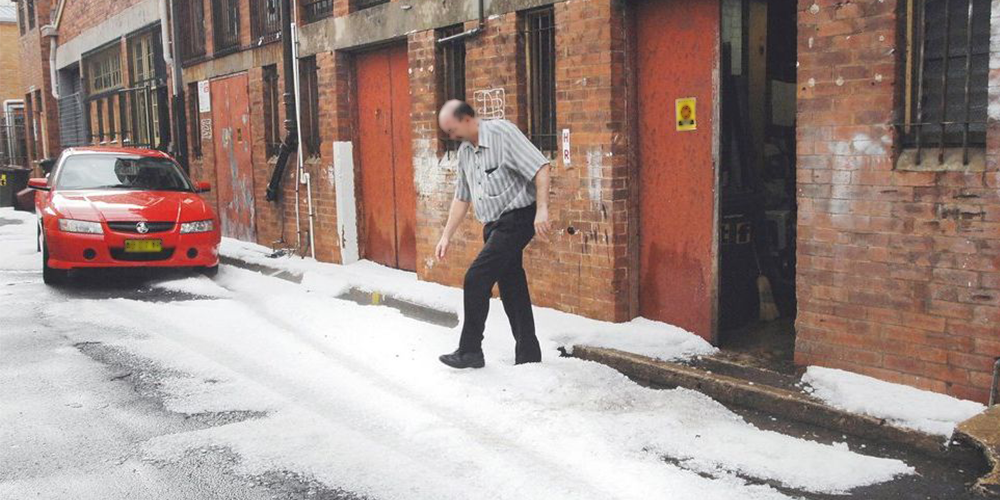What is the Hail?
A hail disaster is a severe meteorological disaster caused by strong convective weather systems. Even though the affected scope of hail is relatively small, and its lasting time is also short, it is still fierce and has great intensity, accompanied by strong winds, heavy rainfall, rapid cooling, and paroxysmal disastrous weather process.
Hail is formed in the cumulonimbus which is caused by a convective cloud. The rising vapor along with the airflow liquefies when it goes up, which means a lower temperature. When it comes below zero degrees Celsius, drops of water freeze into ice which will absorb other ice particles and drops to gain weight to fall into some higher temperature area, melting into some droplets that will also absorb circumambient droplets. It can be lifted again if it has encountered a strong updraft, and will catch up more water particles once again until it weighs more than aerostatic buoyancy and landed. If solid ice particles have not dissolved into water when they are down to the ground, they can be called hail.
A hail disaster, a kind of sudden natural calamity, is a solid precipitation with the shape of a sphere or conic, formed by a clear layer and an opaque layer. The diameter of these ice particles comes as 5 to 50 mms or even 10 cms. As for those whose diameter is shorter than 5mms, they usually are called graupel.

Different Levels of the Hail
The hail usually measures its diameter, hail time, and hail thickness.
Slight hail: less than 0.5 cm diameter; less than 10 min; less than 2cm thickness.
Medium hail: 0.5-2cm diameter; 10–30 min; 2–5cm thickness.
Strong hail: over 2 cm diameter; over 30min; over 5 cm thickness.
A hail disaster is a kind of severe weather disaster caused by a strong convective weather system. Although the scope of appearing is small and the time is short, it is fierce with strong intensity. Besides, it is often accompanied by fierce winds, heavy rain, sharp cooling, and other paroxysmal disaster weather processes.
Impact of Hailstorms
Hailstorms can cause significant damage to property, crops, and vehicles. Large hailstones can break windows, dent vehicles, damage roofs, and harm outdoor vegetation. In agriculture, hailstorms can destroy crops, leading to economic losses for farmers.
Frequency and Regions
Hailstorms are most common in regions with strong convective activity, such as the central United States (known as "Tornado Alley"), parts of Europe, and other areas with a high frequency of thunderstorms. However, hailstorms can occur in many parts of the world under the right atmospheric conditions.
Safety Precautions
During a hailstorm, it is important to seek shelter indoors or in a sturdy structure to avoid injury from falling hailstones. If driving, pull over to a safe location and stay inside the vehicle until the storm passes. Protecting property from hail damage may involve using hail-resistant roofing materials, installing protective coverings for vehicles, and taking precautions for outdoor plants and crops.
Climate Change Impact
There is ongoing research into how climate change may impact the frequency and intensity of hailstorms. Warmer temperatures can lead to more energy in the atmosphere, potentially influencing storm dynamics and the formation of severe weather events like hailstorms.
Post time: Mar-25-2024

